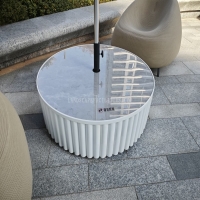Welcome to the website for landscape facilities products and knowledge.
What are the temperature thresholds for material integrity in extreme climates?
Material integrity in extreme climates is heavily influenced by temperature thresholds, which determine how well a substance can withstand thermal stress without degrading. These thresholds vary depending on the material type, composition, and intended application. For instance, metals like steel begin to lose structural stability at around 600°C (1112°F), while polymers may deform at much lower temperatures, often between 100°C to 200°C (212°F to 392°F).
In frigid environments, materials such as rubber become brittle below -40°C (-40°F), compromising flexibility. Conversely, ceramics exhibit high thermal resistance, maintaining integrity up to 1600°C (2912°F), making them ideal for aerospace and industrial uses. Engineers must carefully select materials based on these thresholds to ensure longevity and safety in harsh conditions.
Understanding these limits is crucial for industries operating in extreme climates, from Arctic construction to desert solar farms. Advanced testing methods, including thermal cycling and stress analysis, help identify optimal materials for specific temperature ranges, preventing premature failure and costly repairs. By prioritizing thermal resistance, manufacturers can enhance durability and performance in the face of escalating climate challenges.
Related search:

Recommendation
Round metal tube border design table with tempered glass or granite countertop on the top.